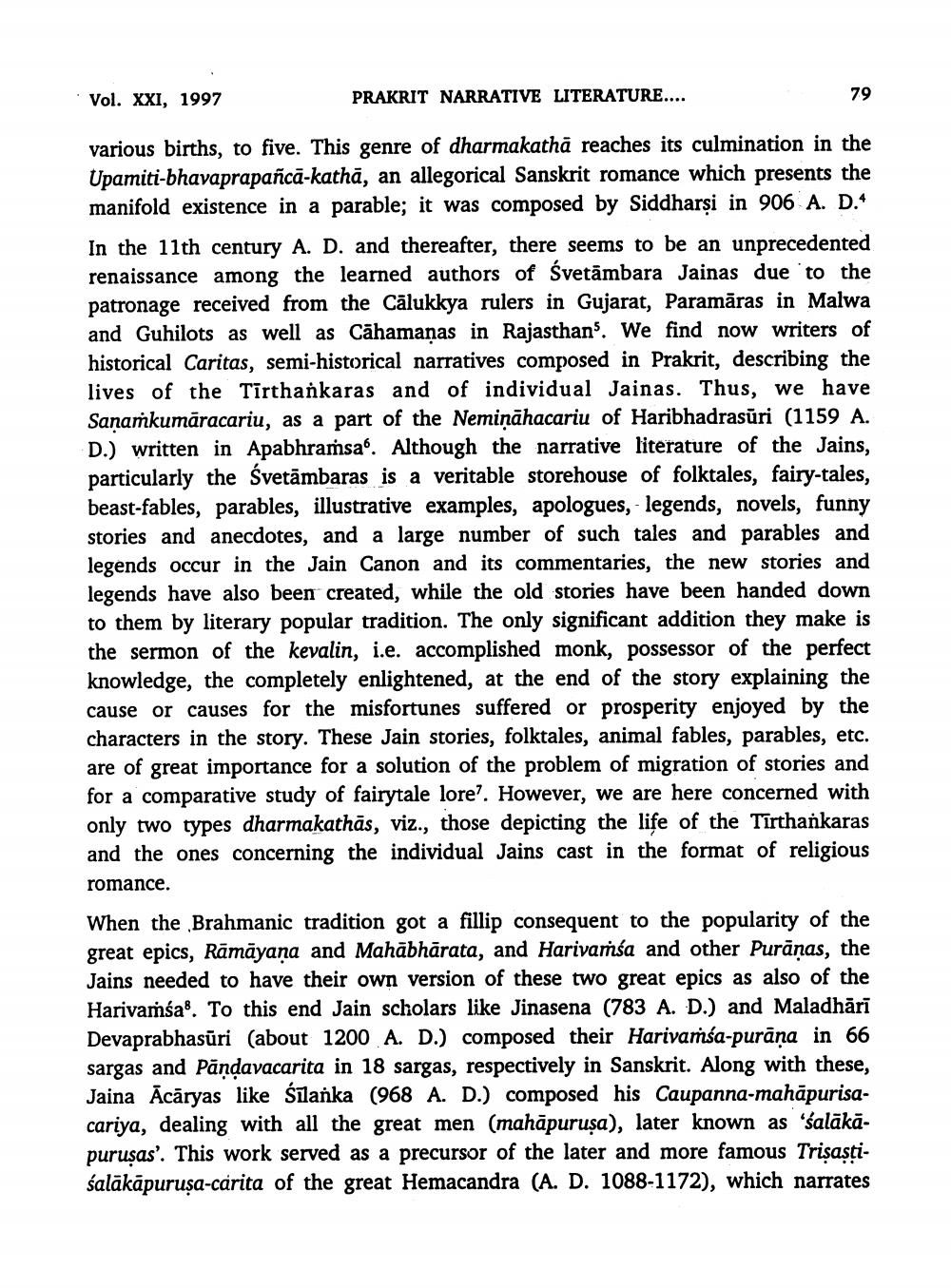________________
Vol. XXI, 1997
PRAKRIT NARRATIVE LITERATURE....
79
various births, to five. This genre of dharmakathā reaches its culmination in the Upamiti-bhavaprapanca-kathā, an allegorical Sanskrit romance which presents the manifold existence in a parable; it was composed by Siddharsi in 906 A. D.
In the 11th century A. D. and thereafter, there seems to be an unprecedented renaissance among the learned authors of Śvetämbara Jainas due to the patronage received from the Cālukkya rulers in Gujarat, Paramāras in Malwa and Guhilots as well as Cāhamanas in Rajasthan'. We find now writers of historical Caritas, semi-historical narratives composed in Prakrit, describing the lives of the Tirthankaras and of individual Jainas. Thus, we have Sanamkumāracariu, as a part of the Nemiņāhacariu of Haribhadrasūri (1159 A. D.) written in Apabhramsa. Although the narrative literature of the Jains, particularly the Svetāmbaras is a veritable storehouse of folktales, fairy-tales, beast-fables, parables, illustrative examples, apologues, - legends, novels, funny stories and anecdotes, and a large number of such tales and parables and legends occur in the Jain Canon and its commentaries, the new stories and legends have also been created, while the old stories have been handed down to them by literary popular tradition. The only significant addition they make is the sermon of the kevalin, i.e. accomplished monk, possessor of the perfect knowledge, the completely enlightened, at the end of the story explaining the cause or causes for the misfortunes suffered or prosperity enjoyed by the characters in the story. These Jain stories, folktales, animal fables, parables, etc. are of great importance for a solution of the problem of migration of stories and for a comparative study of fairytale lore?. However, we are here concerned with only two types dharmakathās, viz., those depicting the life of the Tīrthankaras and the ones concerning the individual Jains cast in the format of religious romance. When the Brahmanic tradition got a fillip consequent to the popularity of the great epics, Rāmāyana and Mahābhārata, and Harivamsa and other Purānas, the Jains needed to have their own version of these two great epics as also of the Harivaṁsa. To this end Jain scholars like Jinasena (783 A. D.) and Maladhārī Devaprabhasūri (about 1200 A. D.) composed their Harivamsa-purana in 66 sargas and Pandavacarita in 18 sargas, respectively in Sanskrit. Along with these, Jaina Ācāryas like shanka (968 A. D.) composed his Caupanna-mahāpurisacariya, dealing with all the great men (mahāpurusa), later known as 'salākāpurusas'. This work served as a precursor of the later and more famous Trisastisalākāpurusa-carita of the great Hemacandra (A. D. 1088-1172), which narrates




